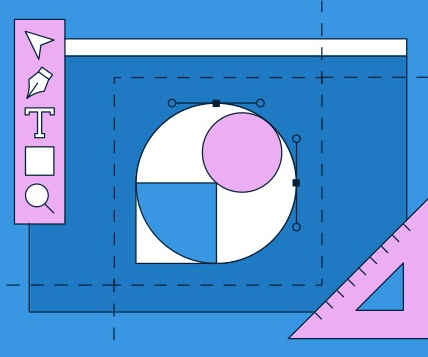In the world of pop culture, logos hold a unique and powerful place. These symbols are more than just corporate branding; they have become cultural touchstones, signifying everything from music to sports, fashion, and even superheroes. In this article, we’ll explore how logos have taken on a life of their own in pop culture, becoming not just marks of identity, but icons that define eras, movements, and personal affiliations.
Music Icons
The music industry is a fertile ground for iconic logos. Few symbols are as synonymous with rock ‘n’ roll as The Rolling Stones’ “Tongue and Lips” logo. Designed by John Pasche in 1970, this provocative image captures the essence of the band’s rebellious spirit and sensuality. It’s a logo that has graced countless album covers, T-shirts, and posters, becoming a symbol of rock rebellion.
Similarly, the Ramones’ presidential-style seal logo has become a symbol of punk rock. Its minimalist design and bold typography are instantly recognizable, and the Ramones’ logo is proudly worn by fans worldwide, representing a musical movement that transcends time.
Sports Fandom
Sports logos are not just symbols of teams; they are badges of loyalty and pride for fans. The New York Yankees’ interlocking “NY” and the Chicago Bulls’ snarling bull are iconic logos that transcend their respective sports. They embody the spirit and history of these teams, representing more than just athletic prowess but also the cities they hail from.
In the world of soccer, the FC Barcelona logo with its distinctive crest and colors is a symbol of passion, commitment, and the “More than a club” ethos. Sports logos are not just marks; they are emblems of shared experiences and unwavering loyalty.
Fashion Statements:
In the realm of fashion, logos are not just labels; they are status symbols. Brands like Gucci, Louis Vuitton, and Chanel have created logos that are synonymous with luxury and opulence. The “GG” of Gucci, the interlocking “LV” of Louis Vuitton, and the interlocking “C” of Chanel are not just letters; they are emblems of exclusivity and style.
On the other end of the spectrum, streetwear brands like Supreme and Off-White have developed logos that represent a different kind of exclusivity, one that is rooted in urban culture and street fashion. The Supreme box logo and Off-White’s diagonal stripes have become symbols of counterculture and coolness.

Cultural Movements:
Logos have played a pivotal role in cultural movements. The peace symbol, designed by Gerald Holtom in 1958, is a simple yet powerful logo that represents peace and has been adopted by various countercultural movements. The rainbow flag, created by Gilbert Baker in 1978, is the symbol of LGBTQ+ pride and has become a beacon of hope and inclusivity.
In the 1960s, the smiley face logo, designed by Harvey Ball, captured the spirit of optimism and counterculture, representing the ideals of peace, love, and happiness that defined the era.
Iconic Logos in Film:
Films have also given rise to iconic logos. The Jurassic Park logo, with its T. rex skeleton, captures the awe and terror of the film’s dinosaurs. The Star Wars logo, designed by Ralph McQuarrie, is not just an opening title; it’s a gateway to a galaxy far, far away.
In the world of horror, the stylized “Scream” logo with its dripping blood is synonymous with the slasher genre. Film logos often set the tone and anticipation for the stories they represent.
Internet Culture:
The digital age has ushered in new forms of logos and symbols. Emojis, GIFs, and memes have become the logos of internet culture. The thumbs-up “Like” symbol on Facebook, the hashtag, and the Twitter bird are all icons that represent our online interactions and conversations.
Internet culture has also given rise to the concept of “logos” for YouTubers and online personalities. These personalized symbols serve as branding tools in the ever-expanding world of content creation.
Conclusion
In conclusion, logos are not mere symbols; they are cultural artifacts that transcend their original purposes. They embody ideals, movements, and moments in time. Logos in pop culture serve as bridges between brands and individuals, connecting people through shared experiences, affiliations, and aspirations. These iconic symbols continue to shape the way we perceive and engage with the world around us, leaving an indelible mark on our culture.





